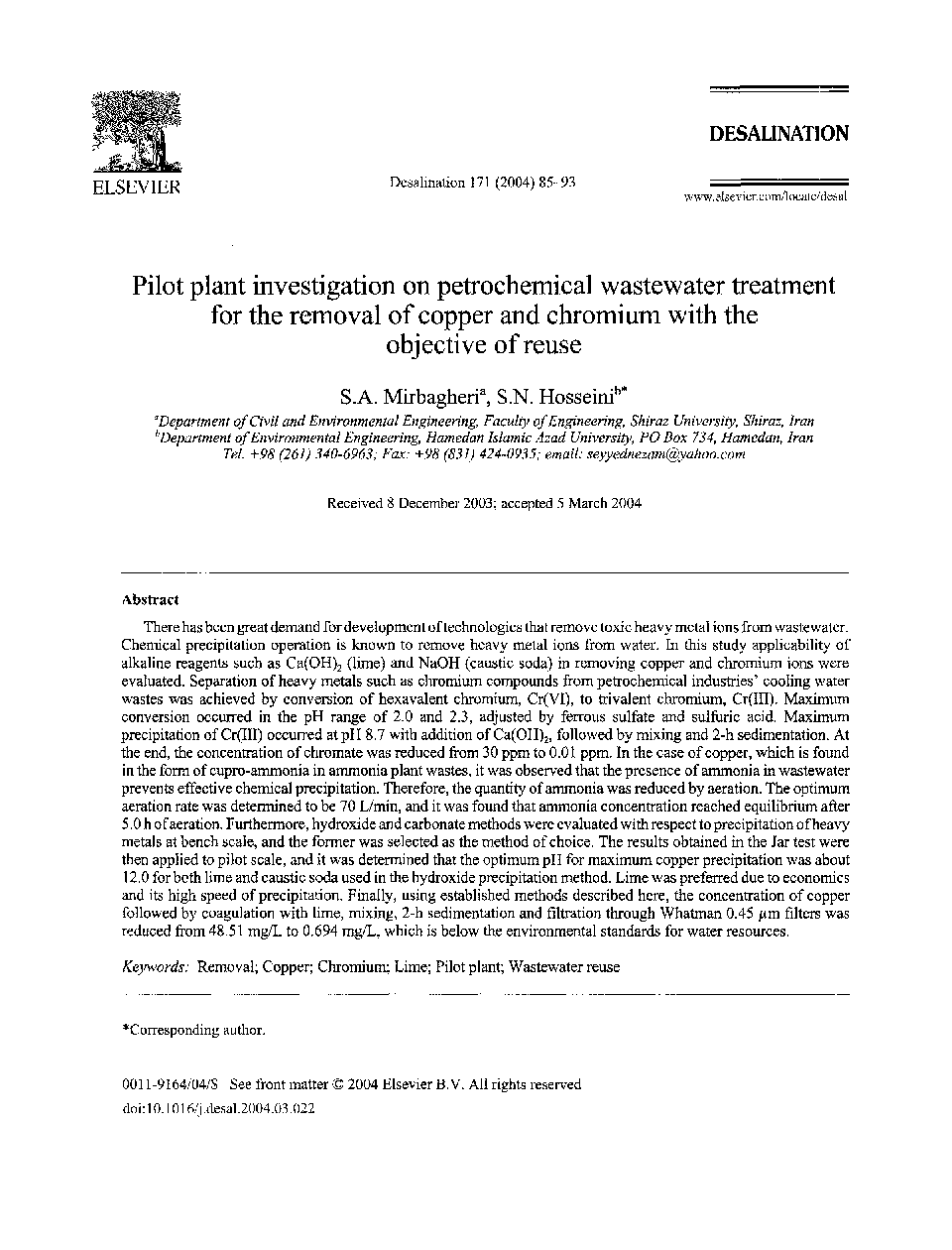| کد مقاله | کد نشریه | سال انتشار | مقاله انگلیسی | نسخه تمام متن |
|---|---|---|---|---|
| 10386232 | 882947 | 2005 | 9 صفحه PDF | دانلود رایگان |
عنوان انگلیسی مقاله ISI
Pilot plant investigation on petrochemical wastewater treatmentfor the removal of copper and chromium with the objective of reuse
دانلود مقاله + سفارش ترجمه
دانلود مقاله ISI انگلیسی
رایگان برای ایرانیان
کلمات کلیدی
موضوعات مرتبط
مهندسی و علوم پایه
مهندسی شیمی
تصفیه و جداسازی
پیش نمایش صفحه اول مقاله

چکیده انگلیسی
There has been great demand for development of technologies that remove toxic heavy metal ions from wastewater. Chemical precipitation operation is known to remove heavy metal ions from water. In this study applicability of alkaline reagents such as Ca(OH)2 (lime) and NaOH (caustic soda) in removing copper and chromium ions were evaluated. Separation of heavy metals such as chromium compounds from petrochemical industries' cooling water wastes was achieved by conversion of hexavalent chromium, Cr(VI), to trivalent chromium, Cr(III). Maximum conversion occurred in the pH range of 2.0 and 2.3, adjusted by ferrous sulfate and sulfuric acid. Maximum precipitation of Cr(III) occurred at pH 8.7 with addition of Ca(OH)2, followed by mixing and 2-h sedimentation. At the end, the concentration of chromate was reduced from 30 ppm to 0.01 ppm. In the case of copper, which is found in the form of cupro-ammonia in ammonia plant wastes, it was observed that the presence of ammonia in wastewater prevents effective chemical precipitation. Therefore, the quantity of ammonia was reduced by aeration. The optimum aeration rate was determined to be 70 L/min, and it was found that ammonia concentration reached equilibrium after 5.0 h o f aeration. Furthermore, hydroxide and carbonate methods were evaluated with respect to precipitation of heavy metals at bench scale, and the former was selected as the method of choice. The results obtained in the Jar test were then applied to pilot scale, and it was determined that the optimum pH for maximum copper precipitation was about 12.0 for both lime and caustic soda used in the hydroxide precipitation method. Lime was preferred due to economics and its high speed of precipitation. Finally, using established methods described here, the concentration of copper followed by coagulation with lime, mixing, 2-h sedimentation and filtration through Whatman 0.45 Am filters was reduced from 48.51 mg/L to 0.694 mg/L, which is below the environmental standards for water resources.
ناشر
Database: Elsevier - ScienceDirect (ساینس دایرکت)
Journal: Desalination - Volume 171, Issue 1, 1 January 2005, Pages 85-93
Journal: Desalination - Volume 171, Issue 1, 1 January 2005, Pages 85-93
نویسندگان
S.A. Mirbagheri, S.N. Hosseini,